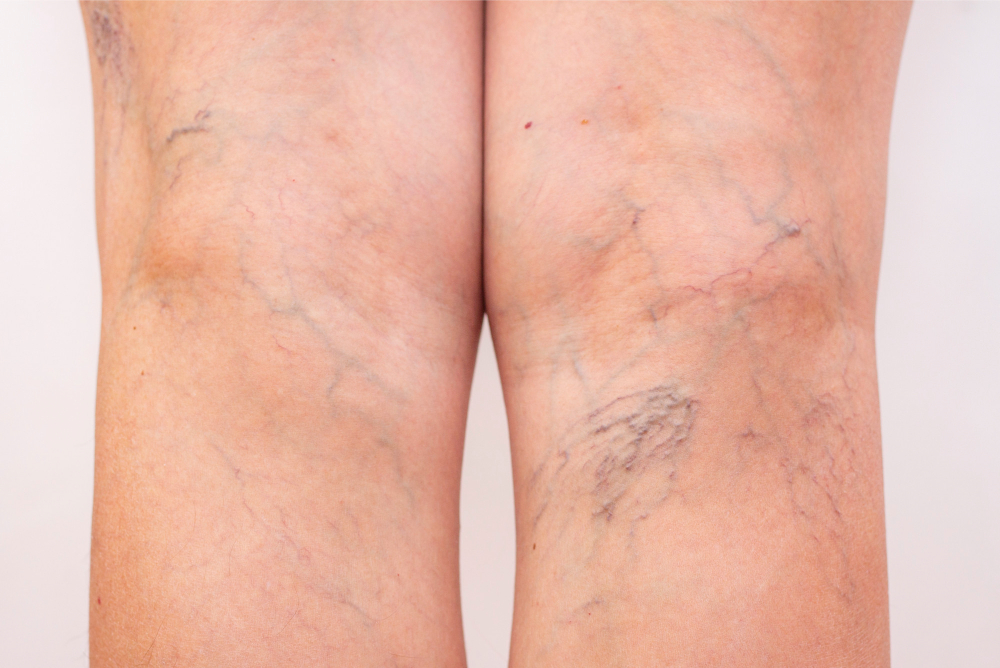
Spider Veins (Telangiectasias)
Spider veins are small, thin blood vessels visible just beneath the skin. They commonly appear on the face or legs, resembling thin tree branches or a spider web pattern. While mostly a cosmetic concern, some people may experience symptoms such as aching, burning, swelling, or leg cramping.
Book OnlinePrevalence
Spider veins affect nearly half of the adult population in the United States. Many seek treatment to improve the appearance of spider veins on visible areas like the legs and face. Fortunately, modern treatments are highly effective, minimally invasive, and typically involve little to no downtime.
Causes and Risk Factors
Spider veins develop due to venous reflux — a backflow of blood caused by damaged vein valves. This causes blood to pool, stretching the vein walls and making them visible under the skin. Common risk factors include:
- Increasing age
- Hormonal changes
- Pregnancy
- Obesity
- Lack of exercise
- Sun exposure
- Family history of spider veins
Diagnosis and Treatment
Spider veins are diagnosed through physical exams, symptom evaluation, and sometimes ultrasound. Treatments are minimally invasive and include:
Compression Stockings
Wearing compression stockings helps improve blood flow by applying pressure to affected veins. This controls symptoms but does not eliminate spider veins.
Sclerotherapy
This procedure involves injecting a sclerosant solution directly into spider veins to collapse them. It is performed in-office, with each session lasting about an hour. Typically, 2 to 4 treatments are needed.
Endovenous Laser Treatment (EVLT)
Also known as laser ablation, EVLT involves inserting a catheter with a laser probe into the vein. The laser heat seals the damaged vein, redirecting blood flow to healthier vessels.
These modern treatments generally cause less pain, fewer side effects, and faster recovery compared to traditional vein surgery.
Prevention
While spider veins cannot always be prevented, lifestyle changes may reduce your risk. Recommendations include:
- Maintaining a healthy weight
- Regular exercise
- Wearing support stockings and comfortable, flat shoes
- Moving legs frequently, especially during long periods of sitting or standing
